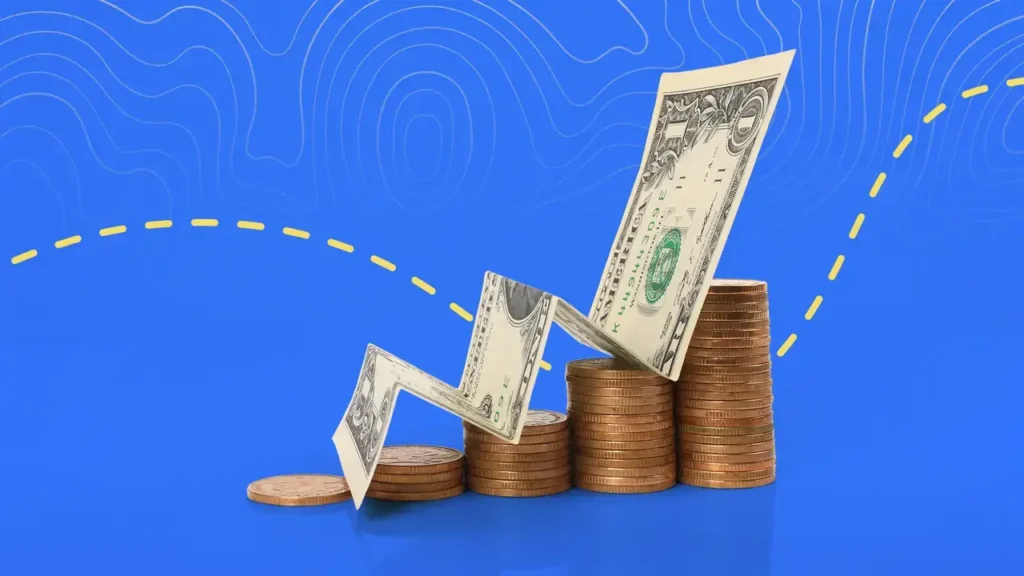Discover how laddering bonds or CDs creates predictable income, protects against inflation, and supports financial goals. A low-risk strategy to grow your money.
Table of Contents
Introduction: Turning Idle Cash Into a Steady Income Stream
If you’re sitting on a large sum of cash from a home sale, inheritance, or years of disciplined saving, the last thing you want is for inflation to quietly eat away at it. At the same time, you may not want the rollercoaster risk of the stock market. That’s where laddering bonds or certificates of deposit (CDs) comes in—a time-tested strategy to make your money work harder while keeping risk in check.
By setting up a ladder of Treasuries or FDIC-insured CDs with staggered maturities (such as 1 year, 2 years, 3 years, and beyond), you can:
- Create predictable cash flow
- Hedge against inflation
- Preserve purchasing power
- Fund short- and medium-term goals
- Reduce reinvestment risk compared to lump-sum investing
As Collin Martin, a fixed income strategist at Schwab Center for Financial Research, puts it:
“Which ladder works for you depends on your needs.”
Let’s break down when laddering makes sense, how to build one, and the key decisions you’ll need to make.
What Is a Bond or CD Ladder?

Think of laddering as dividing your money into smaller chunks and investing them across different maturity dates.
- Instead of putting $100,000 into a single 5-year CD, you might split it into five rungs: a 1-year CD, 2-year CD, 3-year CD, 4-year CD, and 5-year CD.
- Each year, one CD matures, giving you access to both the principal and interest. You can either spend the money or reinvest it at current rates.
This staggered approach reduces risk, provides liquidity, and smooths out the uncertainty of future interest rate changes.
When Laddering Makes Sense
1. Preserving Purchasing Power
Inflation is the silent wealth killer. A ladder using Treasury Inflation-Protected Securities (TIPS) or competitive-yield Treasuries can help maintain your money’s value.
Certified financial planner Sue Gardiner shared an example of an inherited IRA where she built a ladder using TIPS, Treasuries, and brokered CDs:
“The ladder was designed so each year’s withdrawal is funded by maturing securities.”
This ensured the client’s heirs could preserve capital while fighting inflation.
2. Paying Off Debt with Extra Income
If you have credit card debt but manage to secure a 0% balance transfer card, a bond or CD ladder can generate the cash flow needed to help clear your balance.
For instance:
- Sell a house → receive $100,000.
- Put some into a high-yield savings account for emergencies.
- Use the rest to build a short-term ladder (3-month, 6-month, 1-year CDs).
As they mature, redirect that money to paying off your debt interest-free.
3. Saving for a Specific Goal
Maybe your goal is buying a home in five years. A ladder ensures all funds are available by that date.
Gardiner explains:
“If the goal has a finite date, ladder the strategy so all the money is available for the down payment on that date.”
This makes ladders ideal for education costs, weddings, or planned major purchases.
4. Bridging the Gap to Retirement
If you’re close to retirement but delaying Social Security benefits, a bond ladder can generate reliable income until your bigger checks arrive.
Retirement researcher Wade Pfau highlights:
“It provides stability and predictability while bridging the gap until larger income sources like Social Security kick in.”
Key Questions to Ask Before Building a Ladder
1. How long before I need the money?
You must clearly define your liquidity needs. Tapping a CD before maturity often means penalties, while selling a bond early could mean losing principal.
2. CDs or Bonds: Which Is Better?
- CDs: FDIC-insured, stable, but fully taxable (federal, state, local).
- Treasuries: Lower yields at times, but exempt from state and local taxes—a huge perk in high-tax states.
- Municipal Bonds: Tax advantages but require careful selection.
- Corporate Bonds: Higher yields, but higher risks.
3. Do I Want to Manage It Myself?
If your ladder is short-term and one-time, managing it yourself is straightforward.
But for ongoing ladders:
- You must track maturities and reinvest regularly.
- Brokerages often provide automated ladder strategies.
- Alternatively, bond ladder ETFs can handle the reinvestments for you.
Steps to Build a CD or Bond Ladder
- Define your goal – income, debt payoff, home purchase, or retirement bridge.
- Choose your instruments – CDs, Treasuries, TIPS, or ETFs.
- Decide your ladder length – short-term (months), medium-term (3–7 years), or long-term (10+ years).
- Split your funds across rungs – evenly distribute or tilt toward short-term maturities for liquidity.
- Reinvest strategically – when a rung matures, roll it into a new long-term rung at the current best rate.
Advantages of Laddering
- Predictable Income: Each rung matures at set intervals.
- Inflation Protection: Especially if you include TIPS.
- Liquidity: Regular access to funds.
- Risk Reduction: No guessing where interest rates will be.
- Tax Efficiency: Treasuries offer state/local tax savings.
Potential Drawbacks
- Callable Bonds: The issuer may repay early, disrupting your ladder.
- Reinvestment Burden: Without automation, ladders require active tracking.
- Lower Returns vs. Stocks: Safe, but less growth potential.
- Penalties for Early Withdrawal: CDs, in particular, can cost you if cashed in early.

Real-Life Example of a Ladder in Action
Imagine you have $200,000 you want to invest safely:
- $40,000 → 1-year CD at 4.5%
- $40,000 → 2-year Treasury at 4.2%
- $40,000 → 3-year Treasury at 4.1%
- $40,000 → 4-year CD at 4.3%
- $40,000 → 5-year Treasury at 4.5%
Every year, one chunk matures. If rates rise, you reinvest at higher yields. If they fall, you’re still locked into earlier higher rates.
This strategy balances safety, liquidity, and return without guessing future rates.
Frequently Asked Questions (FAQ)
Q1: What is the best length for a CD or bond ladder?
It depends on your goals. Short-term goals may only need a 1–5 year ladder, while retirement income planning may use a 10+ year ladder.
Q2: Are CDs safer than bonds?
Yes. CDs are FDIC-insured up to $250,000 per bank. Bonds carry market risk unless held to maturity.
Q3: Can I build a ladder with ETFs?
Yes. Bond ladder ETFs now exist, automating reinvestments and diversifying exposure.
Q4: What happens if I need money before maturity?
You’ll pay early withdrawal penalties on CDs or potentially lose principal selling bonds on the secondary market.
Q5: Should I use TIPS in my ladder?
Yes, if inflation protection is a priority. TIPS adjust with inflation, making them a smart hedge.
Conclusion: A Smart, Low-Risk Way to Put Your Cash to Work
Laddering bonds or CDs isn’t flashy. It won’t make you rich overnight. But it offers peace of mind, predictable income, and inflation protection—three things every investor craves.
Whether you’re saving for a down payment, paying off debt, or creating a retirement bridge, a laddering strategy can make your money work harder without exposing it to excessive risk.
In uncertain markets, that’s a financial move worth considering.
